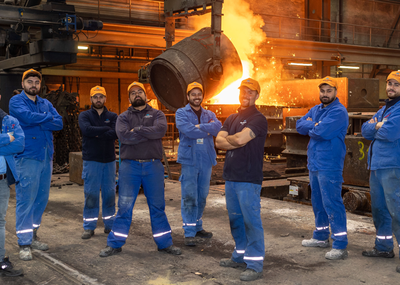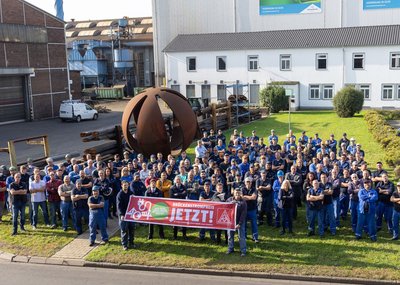The proposed introduction of an industrial electricity price is seen by many as a solution to the crisis facing German industry. However, from the perspective of energy-intensive medium-sized enterprises like Siempelkamp Foundry in Krefeld, this hope is misleading. According to the company, the current plans to adapt the EU state aid framework (Clean Industry Deal State Aid Framework, CISAF) for an industrial electricity price do not offer a sustainable improvement in competitiveness – neither in the short nor in the long term.
“In the end, what remains is a cost reduction of just a few percent. Who seriously believes this will make us globally competitive?” asks Dr. Georg Geier, Managing Director of Siempelkamp Foundry.
Initial calculations highlight the weaknesses of the industrial electricity price
An initial rough calculation by Siempelkamp Foundry shows: the planned industrial electricity price will not provide noticeable relief for energy-intensive SMEs. Assuming an average spot market price of around €80/MWh in 2024, the maximum possible reduction would be approximately 38%. Depending on how the average is calculated, this figure may be significantly lower. Since only half of the electricity consumption is eligible for subsidies, the actual relief drops to below 20% of pure energy costs.
Additionally, with grid fees, levies, and surcharges rising rapidly, the actual energy price will soon account for less than half of the total electricity costs during the aid framework’s term. As a result, medium-term relief falls below 10%. And because only three out of five years are expected to be eligible for aid, the total relief in the long term shrinks to below 6%.
On top of that, at least half of the subsidy must be reinvested. Past experience with so-called “ecological commitments” has shown that this entails significant bureaucratic effort. Ultimately, the immediate, effective relief amounts to just 2–3% – in an environment of sharply rising cost pressures.
“If Germany’s industrial power costs are three times higher than those of our global competitors, then a discount of a few percentage points is nothing more than a drop in the ocean,” adds Dr. Georg Geier.
Electricity tax debate irrelevant for energy-intensive companies
The current debate around reducing the electricity tax also misses the mark for many energy-intensive businesses. These companies have already been largely exempt from electricity tax for years – thanks to the so-called “peak equalization” scheme introduced as part of the ecological tax reform under the 1999 Red-Green coalition, and continued in a modified form under the current government.
“In total, this is a zero-sum game – there’s no talk of noticeable relief,” summarizes Dr. Geier.
Call for long-term strategy
What energy-intensive SMEs really need is not symbolic politics but a reliable, long-term and competitive energy policy that ensures certainty and planning reliability. Only under such conditions can the necessary transformation towards decarbonization and digitalization be pursued with bold investments.
About Siempelkamp
Siempelkamp Foundry in Krefeld specializes in manufacturing large, hand-molded castings of up to 320 tons made from spheroidal graphite cast iron. With an annual casting volume of over 60,000 tons and around 400 employees, it is one of the largest hand-molding foundries in the world. Its comprehensive, customer-focused service portfolio includes structural components for innovative machinery manufacturers in the energy sector, raw materials industry, press engineering, steel production, automotive, and other key sectors driving transformation.
Siempelkamp is a globally active corporate group operating in the fields of machinery and plant engineering, casting technology, and engineering services. With nearly 3,000 employees worldwide, the Siempelkamp Group ensures its technologies rank among the global leaders.












